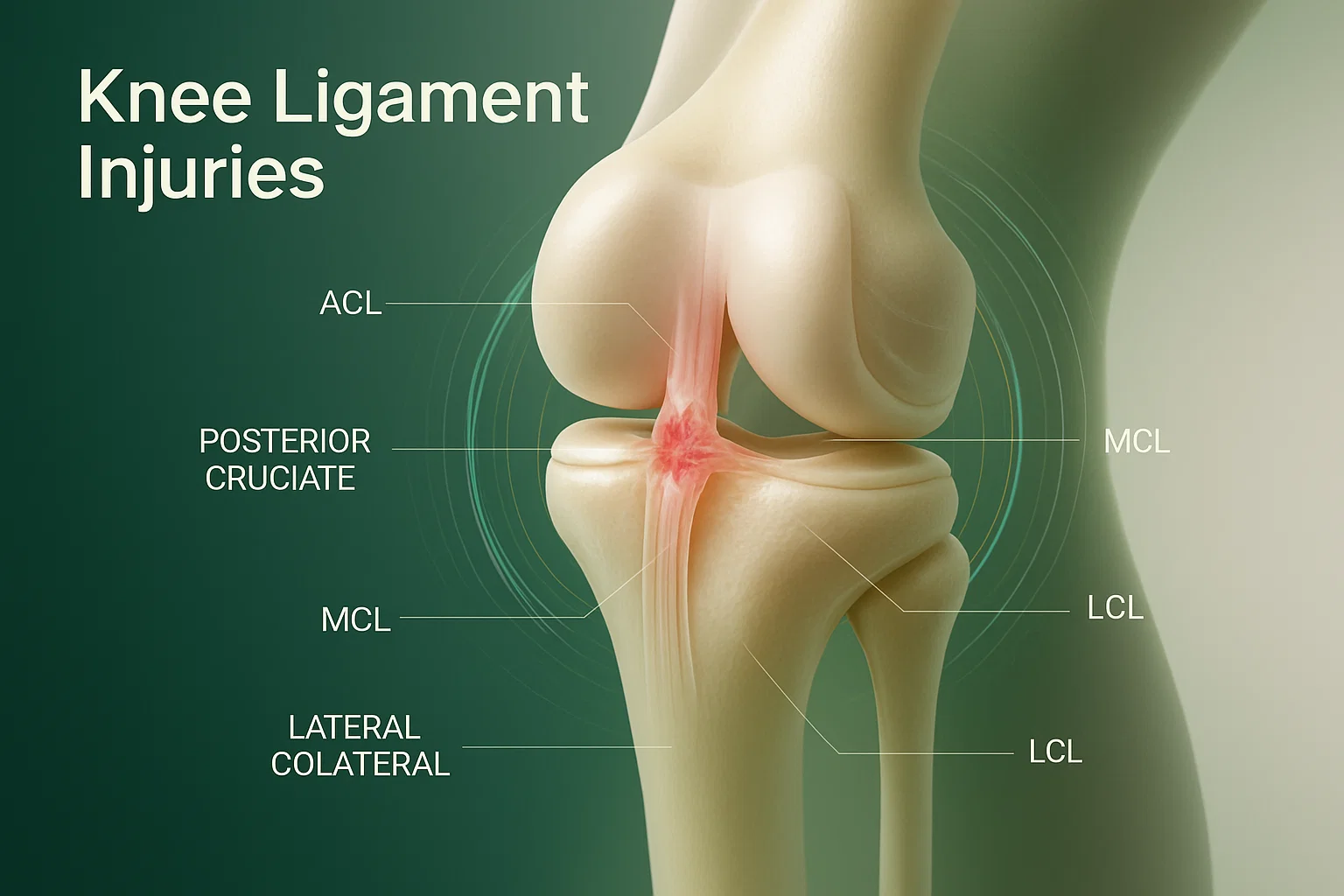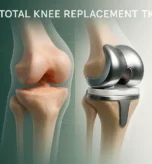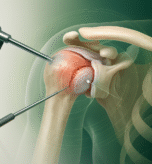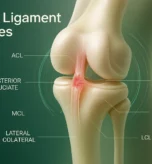
Knee injuries are among the most common and most feared/problems for athletes and active individuals. The knee joint’s complex design allows us to run, pivot, and jump but that same flexibility makes it vulnerable to ligament damage.
In this article, Dr. Sudarshan Bhandary, internationally trained orthopaedic surgeon in Dubai, explains how knee ligament injuries happen, how they are treated, and what you can expect during recovery.
The Key Ligaments Inside Your Knee
Your knee contains several key ligaments that maintain stability:
- ACL (Anterior Cruciate Ligament):
Prevents the tibia (shin bone) from sliding too far forward. - PCL (Posterior Cruciate Ligament):
Prevents backward sliding of the tibia. - MCL & LCL (Medial & Lateral Collateral Ligaments):
Stabilize the knee side-to-side. - PLC (Posterolateral Corner):
Supports rotational stability.
A tear in any of these can lead to instability, pain, and functional limitations.
How Do Knee Ligament Injuries Happen?
- Sudden deceleration while running
- Rapid pivoting or cutting motions (football, basketball, skiing)
- Direct trauma or collision
- Hyperextension injuries
- Falls or awkward landings
An audible ‘pop’ sound, rapid swelling, and inability to bear weight are common signs.
Diagnosis Getting It Right Matters
A proper diagnosis involves:
- Detailed physical examination
- MRI scans to assess soft tissue damage
- Assessment of associated meniscal or cartilage injuries
At Dr. Bhandary’s clinic, accurate diagnosis is the first critical step to ensure an effective treatment plan.
Treatment Options When Surgery Is Needed
- Partial tears or minor sprains:
Often treated conservatively with rest, bracing, and physiotherapy. - Complete ligament ruptures:
Particularly ACL or multi-ligament injuries, usually require surgical reconstruction.
Dr. Bhandary specializes in minimally invasive arthroscopic ACL reconstruction, preserving surrounding structures and enabling faster recovery.
In multi-ligament injuries, complex reconstruction may involve staged procedures to restore full function.
The Recovery Journey What Patients Should Expect
- Day 1-7: Pain control, swelling reduction, gentle movement
- Week 2-6: Start supervised physiotherapy
- 3-6 Months: Progressive strength and stability training
- 6-12 Months: Return to high-level sports
Each recovery plan is customized, with close monitoring to prevent re-injury.
Why Experience Matters in Complex Knee Surgery
Surgical success depends heavily on:
- Precise anatomical reconstruction
- Expert handling of grafts
- Customized rehabilitation
Dr. Bhandary’s international fellowship training and decades of ligament reconstruction experience make him one of Dubai’s top choices for complex knee surgeries.
Conclusion:
Knee ligament injuries are seriousbut with expert care, most athletes can make a full return to their sport. Early evaluation, correct surgical technique, and guided rehabilitation make all the difference.
If you’re dealing with knee instability or injury symptoms, schedule a consultation with Dr. Bhandary to discuss your options.






